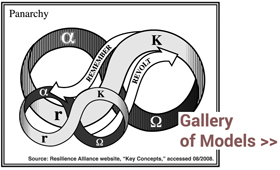Three recent videos — each by a leader in systems education — provide clear and concise introductions to systems concepts. Each that I describe here is also quite different from the others.
Their differences are due in part to their framing. Linda Booth Sweeney starts with the question, “What is a system?” Beth Sawin explores, “What makes climate change so hard to address?” And Derek Cabrera asks, “What is thinking?”
Linda has worked with PBS Learning Media to develop a Systems Literacy curriculum of videos and supporting materials for K-12 students. The delightful introductory video I refer to is this one here.
Beth works with Climate Interactive, which is developing the Climate Leader training series, including this video about how a changing climate is influenced by deeply embedded social systems.
Derek and team have developed a collection of tools, including the video at top, a new book, and a curriculum. There’s also a web-based diagramming app called MetaMap, which he compares with mind-map and concept-map approaches to visual representation.
MetaMap is based on the DSRP model: “Cognition is (1) a complex adaptive system (CAS) (2) embodied, and (3) follows patterns of (a) Distinctions (identity-other), (b) Systems (part-whole), (c) Relationships (action-reaction), and (d) Perspectives (point-view).” If this interpretation requires a second look, check out the video at top.
Given the variety of emphases in systems traditions — from cybernetics to system dynamics, complexity, and more — I find that students in the Collaborative Design MFA program benefit when I draw upon materials from across the systems field. This year, the Sweeney, Sawin, and Cabrera videos will each be on my syllabus.
For more on DSRP, see this post.


A belated thanks for this thoughtful overview Howard.
Thanks to you, Linda!